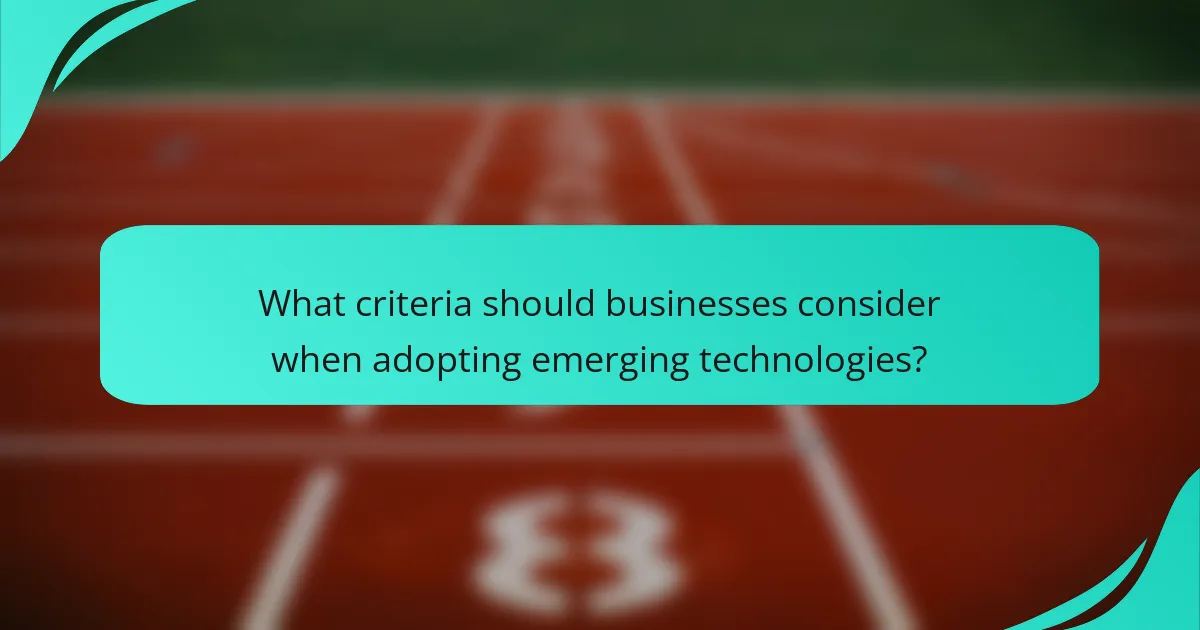Emerging technologies such as AI, VR, and blockchain are revolutionizing industries by enhancing efficiency, engagement, and transparency. AI is streamlining operations and personalizing experiences, while VR is transforming education through immersive learning environments. Meanwhile, blockchain is improving supply chain management by ensuring accountability and real-time data access. Together, these innovations are shaping the future of how we work, learn, and interact.

How is AI transforming industries in the USA?
AI is significantly transforming various industries in the USA by enhancing efficiency, improving decision-making, and personalizing customer experiences. Its applications range from automating routine tasks to providing advanced analytics that drive strategic insights.
Healthcare advancements
In healthcare, AI is revolutionizing diagnostics and patient care. Machine learning algorithms analyze medical images, enabling faster and more accurate detection of conditions like cancer. Additionally, AI-driven tools assist in predicting patient outcomes, which helps healthcare providers tailor treatments effectively.
AI chatbots are also becoming common, offering patients 24/7 access to information and support. This reduces the burden on healthcare staff and improves patient engagement, leading to better health management.
Financial services automation
AI is streamlining operations in financial services through automation and enhanced data analysis. Algorithms can process transactions and detect fraudulent activities in real-time, significantly reducing risks and operational costs. This allows financial institutions to allocate resources more efficiently.
Moreover, AI-driven robo-advisors provide personalized investment advice at a fraction of the cost of traditional financial advisors. This democratizes access to financial planning, making it available to a broader audience.
Retail personalization
In retail, AI is transforming customer experiences by enabling personalized shopping journeys. By analyzing consumer behavior and preferences, retailers can recommend products tailored to individual tastes, enhancing customer satisfaction and loyalty.
AI tools also optimize inventory management by predicting demand trends, which helps retailers reduce waste and ensure product availability. This leads to improved operational efficiency and better financial performance.

What are the benefits of Virtual Reality in education?
Virtual Reality (VR) in education offers numerous advantages, including increased student engagement and the ability to create immersive learning environments. These benefits can enhance understanding and retention of complex subjects by providing interactive experiences that traditional methods cannot match.
Enhanced engagement
VR significantly boosts student engagement by transforming passive learning into active participation. When learners interact with virtual environments, they are more likely to stay focused and motivated. For instance, a history lesson can become a virtual tour of ancient civilizations, making the content more relatable and exciting.
To maximize engagement, educators should incorporate VR experiences that align with curriculum goals. Selecting high-quality VR content and ensuring accessibility for all students are crucial steps. Avoid overwhelming students with too much information at once; instead, focus on key concepts that can be explored through VR.
Immersive learning experiences
Immersive learning experiences provided by VR allow students to practice skills in realistic settings. For example, medical students can perform virtual surgeries, gaining hands-on experience without the risks associated with real-life procedures. This practical approach can significantly enhance skill acquisition and confidence.
When implementing VR for immersive learning, educators should consider the technological requirements and ensure that the necessary equipment is available. It’s also beneficial to provide guided sessions where students can reflect on their experiences and connect them to real-world applications. Regular feedback can help improve the effectiveness of VR in educational settings.

How does Blockchain improve supply chain transparency?
Blockchain enhances supply chain transparency by providing a decentralized and immutable ledger that records every transaction. This technology allows all parties involved to access real-time data, ensuring accountability and traceability throughout the supply chain.
Immutable records
Immutable records in blockchain mean that once data is entered, it cannot be altered or deleted. This feature is crucial for supply chains, as it ensures that all transactions are permanently documented, reducing the risk of fraud and errors. For example, if a product is recalled, the entire history of its journey can be traced back to identify the source of the issue.
To maximize the benefits of immutable records, companies should ensure that all relevant data points, such as production dates and shipment details, are accurately recorded at each stage. This practice not only facilitates compliance with regulations but also builds trust among stakeholders.
Real-time tracking
Real-time tracking enabled by blockchain allows stakeholders to monitor the movement of goods throughout the supply chain instantly. This capability helps in identifying delays or disruptions quickly, allowing for timely interventions. For instance, if a shipment is delayed, the affected parties can be notified immediately, minimizing potential losses.
Implementing real-time tracking requires integrating IoT devices with blockchain systems. Companies should consider using GPS and RFID technology to provide accurate location data. Additionally, establishing clear protocols for data sharing among partners can enhance the effectiveness of real-time tracking efforts.

What are the key applications of Analytics in marketing?
Analytics plays a crucial role in marketing by helping businesses understand their audience and measure the effectiveness of their campaigns. By leveraging data, companies can make informed decisions that enhance customer engagement and optimize marketing strategies.
Customer behavior insights
Analytics provides valuable insights into customer behavior by tracking interactions across various touchpoints. This data helps marketers identify trends, preferences, and pain points, allowing for more personalized marketing efforts.
For example, analyzing website traffic can reveal which products are most popular, enabling targeted promotions. Additionally, understanding customer demographics can inform content creation and advertising strategies, ensuring they resonate with the intended audience.
Campaign performance measurement
Measuring campaign performance is essential for determining the return on investment (ROI) of marketing efforts. Analytics tools can track metrics such as conversion rates, click-through rates, and customer acquisition costs, providing a clear picture of what works and what doesn’t.
Marketers should regularly review these metrics to adjust strategies in real-time. For instance, if a particular ad is underperforming, reallocating budget to higher-performing channels can maximize overall campaign effectiveness. Regular A/B testing can also help refine messaging and creative elements for better results.

What criteria should businesses consider when adopting emerging technologies?
Businesses should evaluate several key criteria when adopting emerging technologies, including cost-effectiveness, scalability, and alignment with business goals. These factors help ensure that the investment yields a positive return and integrates smoothly into existing operations.
Cost-effectiveness
Cost-effectiveness is crucial for determining whether an emerging technology will provide value to a business. Companies should analyze both initial implementation costs and ongoing operational expenses, comparing these against potential savings or revenue increases. For example, while AI solutions may require significant upfront investment, they can lead to substantial efficiency gains that offset costs over time.
When assessing cost-effectiveness, consider the total cost of ownership (TCO), which includes hardware, software, training, and maintenance. A thorough cost-benefit analysis can help identify whether the technology will deliver a favorable financial impact.
Scalability
Scalability refers to a technology’s ability to grow and adapt as a business expands. When adopting emerging technologies, businesses should ensure that the solutions can handle increased workloads without significant additional costs or performance degradation. For instance, cloud-based services often provide flexible scaling options that allow companies to adjust resources based on demand.
It’s essential to evaluate whether the technology can accommodate future growth, such as increased user numbers or expanded functionalities. A scalable solution not only supports current needs but also positions the business for long-term success, making it a critical consideration in the adoption process.

How can companies leverage AI for competitive advantage?
Companies can leverage AI to gain a competitive edge by enhancing decision-making, improving efficiency, and personalizing customer experiences. By integrating AI technologies, businesses can analyze vast amounts of data, automate processes, and predict future trends, ultimately driving growth and innovation.
Predictive analytics
Predictive analytics uses AI to analyze historical data and forecast future outcomes. Companies can utilize this technology to identify trends, customer behaviors, and potential risks, allowing for more informed strategic decisions. For instance, retailers can predict inventory needs based on seasonal trends, optimizing stock levels and reducing waste.
To implement predictive analytics effectively, organizations should focus on data quality and integration. Ensuring that data sources are reliable and comprehensive is crucial for accurate predictions. Additionally, businesses should regularly update their models to adapt to changing market conditions.
Process automation
Process automation involves using AI to streamline repetitive tasks, enhancing operational efficiency. By automating routine processes such as data entry, customer support, and inventory management, companies can reduce human error and free up employee time for more strategic activities. For example, chatbots can handle customer inquiries, providing instant responses and improving satisfaction.
When adopting process automation, companies should start with a clear understanding of which tasks can be automated without compromising quality. It’s essential to train employees on new systems and ensure that there is a fallback for complex issues that require human intervention. Regularly reviewing automated processes can help identify areas for further improvement and optimization.
